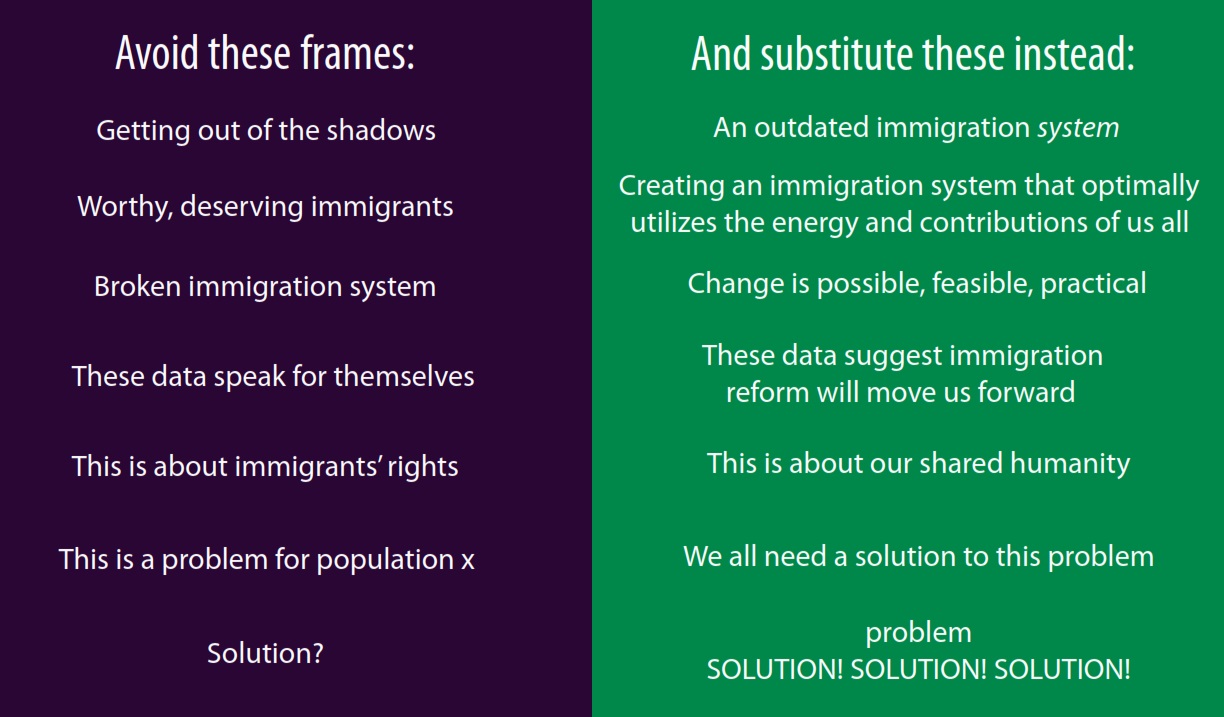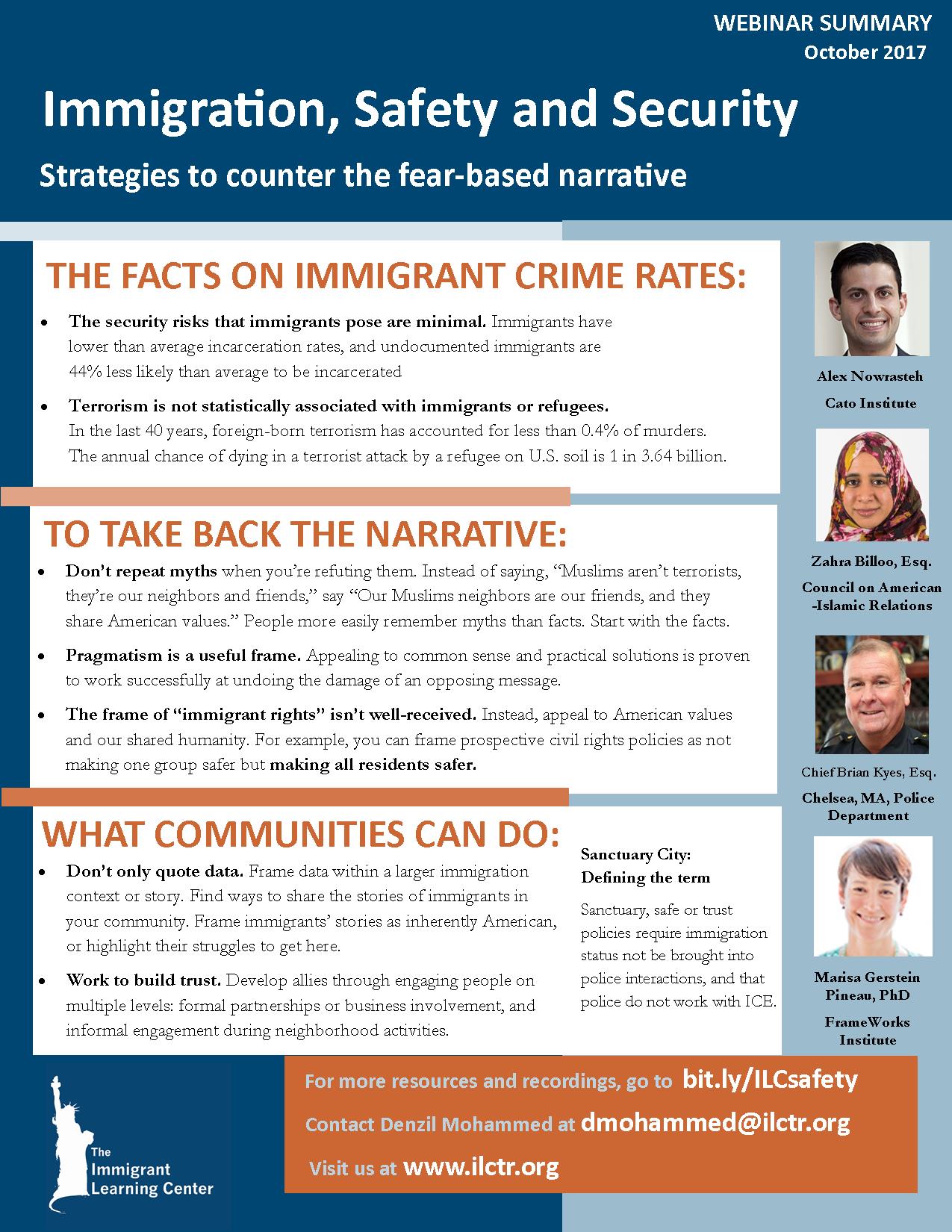
during the webinar Immigration, Safety and Security.
According to the Pew Research Center, for voters who supported the President in the 2016 election, the biggest issues facing the country were not jobs or the economy but illegal immigration and terrorism. These two issues are often conflated, yet the data tells a completely different story: the incarceration rate of undocumented immigrants is far lower than average, and the annual rate of being killed by foreign-born terrorism is less than 0.4 percent. Unfortunately, the facts are often not enough to change minds. If we truly want to change the immigration conversation, we must frame facts in a context that resonates with the listener and avoid phrases that have negative associations.
 Framing messages puts an idea into context for fuller understanding and gives the speaker power to shift the conversation. Different frames can apply depending on the audience in order to find common ground. Stories of immigrants, for example, can be framed as an American story appealing to common values creating a feeling of unity rather than otherness. Every communication is more effective with thoughtful framing, even messages on social media with limited word counts. Retweeting or reposting a myth to refute it is tempting, but repeating misinformation perpetuates the idea and strengthens false associations. Instead, project the truth in the positive form. For example, a post saying “Immigrants are criminals” can be corrected with “Immigrants have significantly lower incarceration rates and make outsized contributions to our communities.”
Framing messages puts an idea into context for fuller understanding and gives the speaker power to shift the conversation. Different frames can apply depending on the audience in order to find common ground. Stories of immigrants, for example, can be framed as an American story appealing to common values creating a feeling of unity rather than otherness. Every communication is more effective with thoughtful framing, even messages on social media with limited word counts. Retweeting or reposting a myth to refute it is tempting, but repeating misinformation perpetuates the idea and strengthens false associations. Instead, project the truth in the positive form. For example, a post saying “Immigrants are criminals” can be corrected with “Immigrants have significantly lower incarceration rates and make outsized contributions to our communities.”
Experts in research, advocacy, law enforcement and framing joined The Immigrant Learning Center’s Public Education Institute for a free webinar on Immigration, Safety and Security on October 4, 2017, to show how to change the conversation on immigrants, refugees and Americans’ safety. Click here to access recordings and slides from the webinar as well as a handy webinar summary.
